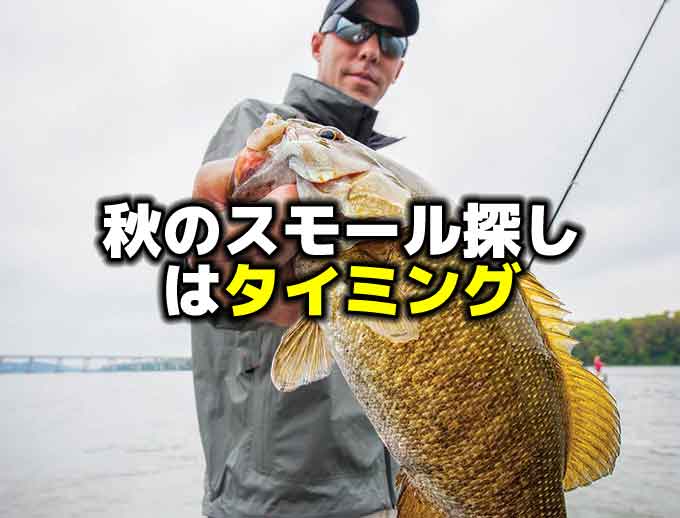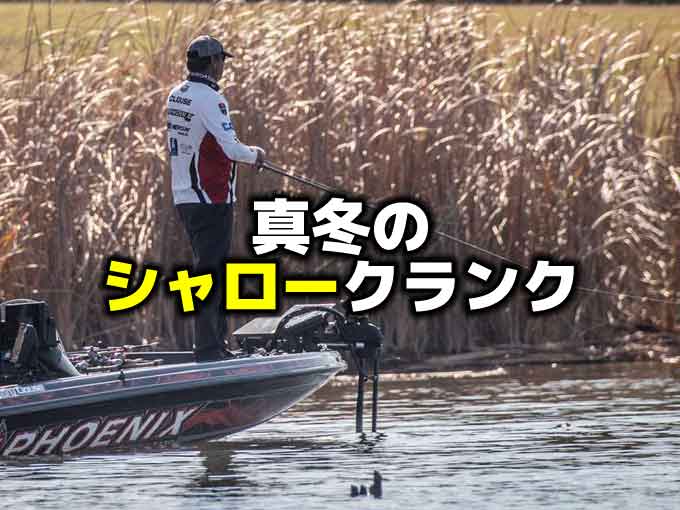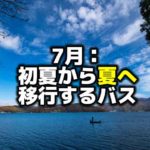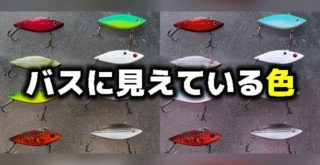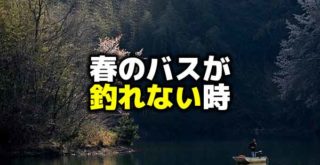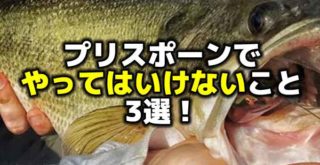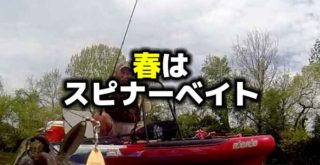冬の雨がバス釣りにどう影響するのか

Photo by bassmaster.com
こんにちは!店長の小山です!
本日は海外サイトより、”Harness winter rain productivity”と言う記事を引用してご紹介いたします。
引用先:bassmaster.com ”Harness winter rain productivity”by David A. Brown December 18, 2018(海外サイトです)
「♪雨は夜更けすぎに~♪雪へと変わるだろう~♪ きっと君は来ない~♪ひとりきりの冬バス釣り~♪」
などと歌っているうちにクリスマスは終わってしまったのですが、この冬(2018年)は、ここまでは暖冬傾向にありました。
いつもならクリスマス寒波がやってきて雪になる事が多かったのですが、今年の冬は雨にやられています。先日の冬の琵琶湖釣行でも雨でした。
琵琶湖の冬の雨、私にとっては釣れる気がしなかったのですが、「きっと君は来ない~」と思って釣っていたところ、タク石黒プロはなんのこともなく釣っていましたね。プロにとって、冬の雨とはどんなものなのでしょう。
「雪の日は釣れる」と言うのは、意外と良く耳にします。私もそう思っています。雪の日と言っても、ビュービューに吹き荒れる嵐のような日ではなく、しんしんと降り積もる静かな日が私としては良いように思います。風が吹かないことが重要なのでしょうかね。
しかし冬の雨のことについては、よくわかりません。私の住むところでは冬に雨が降ることはほとんどないため、気にしたことがなかったのですが、実際のところ、冬の雨はバス釣りにどう影響するのでしょうか。
この記事は、アメリカのバスマスターサイトの記事で、記者のデビッド・A・ブラウン氏が、エリートプロのティム・ホートン氏に取材をしたものです。
ホートンは、アメリカ中部のアラバマ州を本拠地としているためか、トーナメントでは温暖な南西部の川やリザーバーでの試合にめっぽう強い選手ですが、彼によるとアメリカ南部(雪の少ない地域)でのハイランドリザーバーでは、冬の雨によってバス釣りに大きな影響を受けるということです。
冬のリザーバーというフィールドに限定されてしまう内容かもしれませんが、アメリカのトッププロが考える冬の雨のバス釣り。ぜひ、読んでみてください。
流れを知ること
For southern and central U.S. fisheries, winter usually sees warm rains arriving ahead of a frontal system. Blustery conditions, darker skies and some level of warming — that’s the usual script.
“Nine times out of 10, when a front comes through, you get the rain on the warm end,” Horton said. “The cooling temperatures will come after that in the days to follow, but the warm rain will have already run into the lake and warmed it up.
“Sometimes, you get a warm front that’s not followed by cold weather, so a lot depends on the severity of the front. But, when you have lake temperatures down in the upper 40s and you get a warm rain that raises the water temperature in the backs of those creeks into the mid-50s, it can be some of the best fishing you’ll ever see.”
Also attractive are the heightened feeding opportunities. Yep, when warm runoff invades the creeks, it carries a load of sediment that remains suspended long enough to trap head and attract shad. This turbidity also reduces visibility and shifts the advantage to ambush-feeding bass.
Of course, too much of a good thing can swing the pendulum in the opposite direction.
“When it gets too muddy, that can be a negative,” he said. “That’s why I look to the minor run-offs, rather than the main tributaries. Some of those main tributaries coming into the creek can really get blown out, where there’s just too much sediment to really do any good.”
Another potential impediment — cold inflows. Horton’s quick to note that the effect of fluctuating water temperature is relative, so staying on top of the seasonal trends keeps you abreast of waxing and waning opportunities.
“It depends on the severity of the front, and it also depends on how early or late in the winter you are,” he said. “Fifty-five degrees can be really good if it was 50. But 55 degrees can be bad if it was 60.
“When the air temperature is not hardly getting above the 30s or 40s in the dead of winter, but then you get a warm front that comes through and that raid is 55 degrees, it’s going to warm up the water. But early in the winter or later into the spring, if the water temperature is warmer, that cold rain is going to have a negative effect.”
南部および中央アメリカのフィールドでは通常、冬の暖かい雨が寒冷前線が通る前に降ることが多いです。嵐のような状況、暗い空、そしてある程度の気温上昇 – これが通常の流れになります。
「前線が通るときというのは、10のうち9回は、暖かい側で雨が降ります」とホートンは言います。 「その後は寒い日が続くのですが、すでに暖かい雨が湖に流れ込み、暖めてくれています。」
「時には、寒い天候が続かない温暖前線になることもあります。そのため、前線通過時の荒れ具合に大きく依存されます。しかし、湖の水温が7℃~9℃くらいまで下がっていて、暖かい雨が降って、クリークアームの上流から10℃~12℃の水が入ってくると、今まで見た中で最高の釣りになる可能性があります。」
ここで魅力的なのは、フィーディングの頻度が増えるということです。そう、暖かい流れがクリークに入ってくると、長い間溜まっていた堆積物が運ばれ、ずっとかたまっていたシャッドがそれに引き付けられます。この濁りはまた視認性を低下させ、待ち伏せ型のバスにとってもメリットとなります。
もちろん、良いことも度が過ぎると逆効果になります。
「濁りすぎると、悪い結果になる可能性があります。 だからこそ、私はメインリバーではなく、マイナーな流入河川に目を向けています。クリークが流れ込むメインリバーでは本当に失敗を掴まされることがあります。多くの堆積物が入ってくることがいいのです。」
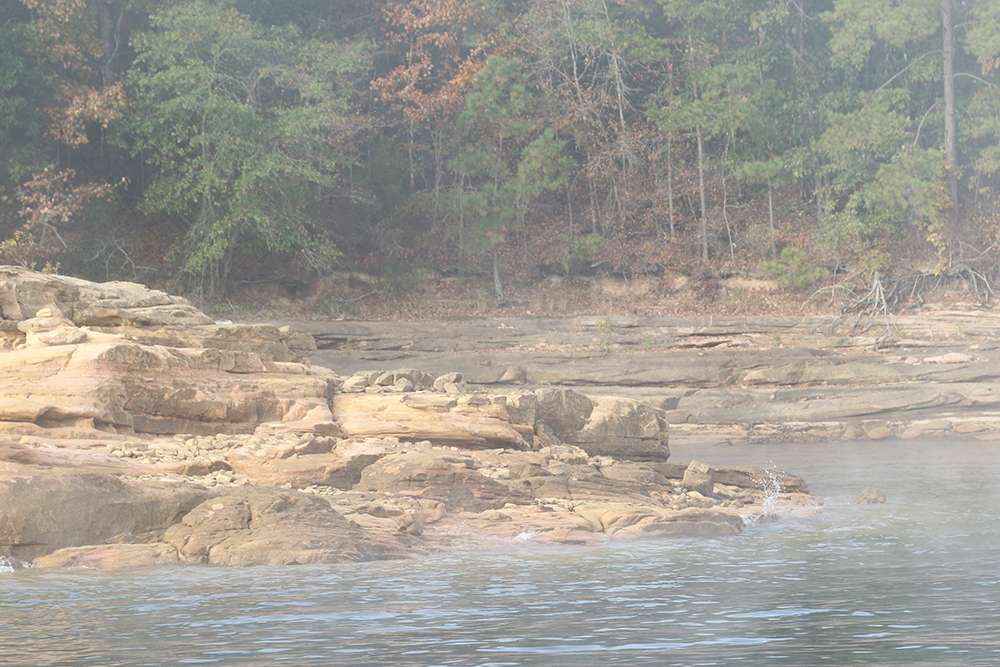
Photo by bassmaster.com
もう1つありがちな悪影響は、冷たい水の流入です。 ホートンは、水温の変動の影響というのは相対的なものであることに気付いていますので、季節の傾向を常に把握していることで、狙い通りにチャンスを掴むことができます。
「それは前線の規模によります、そしてそれはまた冬のどのタイミングかにもよります。 水温10℃からの12℃であれば良いことがあります。しかし、15℃からの12℃では悪い可能性があります。」
「真冬になると気温がマイナス1℃〜4°を超えることはほとんどありませんから、気温が12℃を超えるような暖かい前線が来ると、水温が上がります。しかし、初冬や晩冬の時期など、水温がまだ高い時、それは冷たい雨となり、悪影響を及ぼします。」
リザーバーへ行こう
Given the extreme clarity of most highland reservoirs like Alabama’s Lewis Smith Lake or Missouri’s Table Rock Lake, Horton said the stained water associated with winter rain inflows has a greater impact than it would on fish that spend most of their days in off-colored water.
“That stain actually gives you an advantage in clear water reservoirs,” he said. “You can get on the bank and catch them with a shallow-running crankbait like the Azuma Crank Z Claud Hopper, squarebill or a spinnerbait. It seems like fish that live in clear water and then suddenly get stained water become more aggressive than fish that live in a lake that’s always stained.
“It’s like they’re not used to feeding by feel (lateral line), as opposed to vision, and they’re just aggressive toward everything. So, that stained water definitely makes reservoir fish more catchable.”
アラバマ州のルイススミスレイクやミズーリ州のテーブルロックレイクのようなハイランドリザーバーの多くがクリアレイクであることを考えると、冬の雨の流入によって入ってくるステインウォーターは、多くの日々を綺麗な水で過ごしている魚にとって大きな影響を与えると、ホートンは言います。
「ステインウォーターの流入はたしかに、クリアリザーバーではメリットとなります。 おかっぱりでも、Azuma Crank Z Cloud Hopperのようなシャロースクエアビルクランク、またはスピナーベイトなどでもキャッチすることができます。 クリアウォーターの中に住んでいて、そこが突然ステインウォーターになった場合の魚は、常にステインウォーターの湖に住んでいる魚よりも攻撃的になるようです。」

「視覚ではなく、感触(側線)でフィーディングすることに慣れていないからか、彼らはすべてに対して積極的になるようです。 そういうわけで、そのステインウォーターは間違いなくリザーバーの魚をよりキャッチしやすくします。」
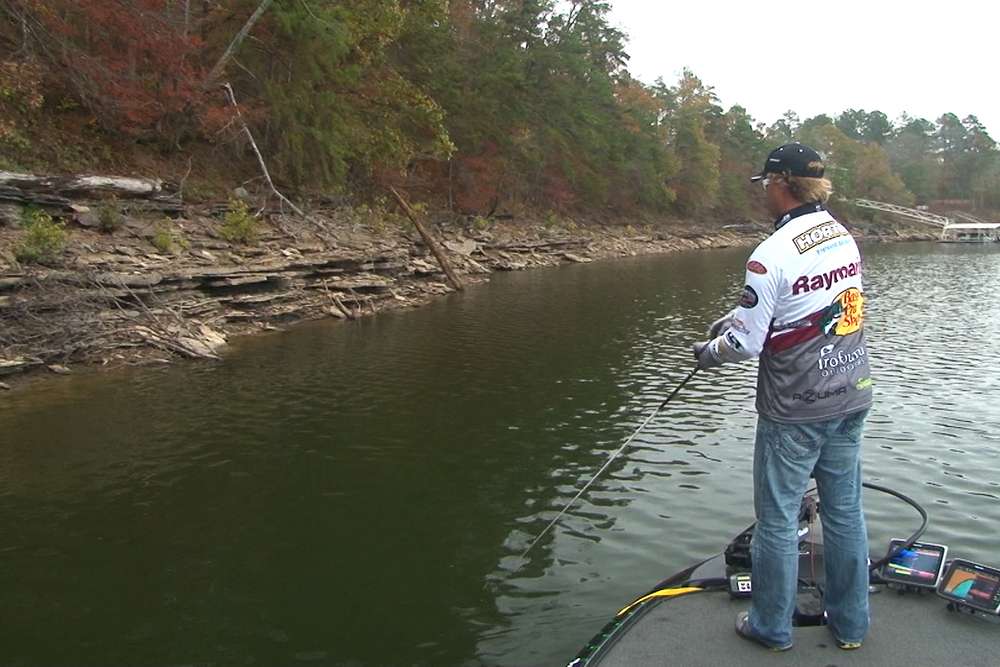
Photo by bassmaster.com
メインリバーのバスの付き場
Contrasting the reservoir’s concentrated inflow areas, Horton said he looks for a significantly different scenario on river systems like the Tennessee. For this one, think measured proximity.
“When it’s really cold in the wintertime and then you get a warm rain, the main river will quickly become warmer than the backwater areas,” he said. “It’s a catch-22 because the fish cannot get in the strength of that current, because the overall water temperature is still cold.
“Their metabolism isn’t high enough during the wintertime for them to stay out in that current, but they still want to be as close to that warmer water as they can get. So they will get right on the mouths of the main river creeks. They’ll be right on the points, but inside the coves and it’s a really strong deal where they really get stacked up.”
Essentially nosing right up to the line of actual current strength, the fish will pile onto these key spots to gorge on shad drawn to the more pleasant water — kind of like cozying up to a campfire and roasting hot dogs on a stick without sticking your hands into the blaze.
A variety of reaction baits — crankbaits, spinnerbaits, Alabama rigs — will work here, but Horton attacks this deal with a 7/16-ounce green pumpkin Swampers football jig with a subtle Klone Crawsome trailer. He’ll keep his boat inside the cove so he’s not fighting the current. Casting right to the edge of the swift water and bringing the bait into the slack water is likely to net largemouth, smallmouth or spotted bass.
“I like the jig here, but it’s not necessarily because I think the fish are not as aggressive; I can control it more as I try to make that one cast to that subtle break, that one eddy,” Horton said.
So, whether he’s poking around in the back of a secondary tributary, or targeting a main lake creek point, Horton expects those winter rains to fire up the feeding and allow him to step on the gas.
“I think you can fish more aggressively after a warm winter rain,” he said. “I think these are aggressive fish that you’re really going to catch.”
リザーバーの流入河川では流れに注目するのとは対照的に、ホートン氏はテネシー川水系に関してはかなり異なる状況を探すと言います。これに関しては、より直近で測定したもので考えます。
「本当に寒い真冬に暖かい雨が降ると、メインリバーはメインリバーのバックウォーターエリアよりも早く暖かくなります。 全体的な水温はまだ低いので、魚はその強い流れを受け入れることができないので、八方塞がりの状態になります。」
「彼らの代謝は、冬の間はその流れのなかにいれるほど十分は高くはありませんが、それでもできるだけ暖かい水の近くにいようとはしています。つまり彼らは、メインリバーのワンドの入口に着くでしょう。彼らは岬状の場所に付きますが、カバーの奥深くに入り込み、根掛かりを恐れない強引なやり取りが必要となります。」
実際は基本的には強い流れの境い目に鼻を向け、魚はこういった枝のようなキースポットでシャッドなどが流れによって流されてくるのを待っています。 – これはキャンプファイアの炎の中に手を突っ込まず、棒の先にフランクフルトを刺して炎に向け、焼き上がるのを待っているようなことです。
クランクベイト、スピナーベイト、アラバマリグなど、さまざまなリアクションベイトが機能しますが、ホートンは7/16オンスのSwampersフットボールジグのグリーンパンプキンを繊細なKlone Crawsomeトレーラーで釣っていきます。彼は流れと戦わないようにするため、自分のボートをワンドの中に入れます。早い流れの水の境目に投げ入れて、ルアーを緩い流れの水に入れていくことは、ラージマウスバス、スモールマウスバス、スポッテッドバスに有効のようです。

「私はここではジグを使うのが好きですが、それは必ずしも魚がそれほどアグレッシブではないと思うからではありません。このような微妙なブレイクとこの渦の中に一発でキャストを決めるという状況で、うまくコントロールしやすいためです。」とホートンは言います。
またホートンは、マイナーな支流のバックウォーターか、メインリバーのワンド入口の岬を狙っているかどうかにかかわらず、冬の雨はフィーディングが始まるサインと期待し、フィールドに足を運びます。
「暖かい冬の雨の後は魚がより積極的になると考えていいと思います。 こういった魚こそ、確実にキャッチできるアグレッシブな魚だと思います。」
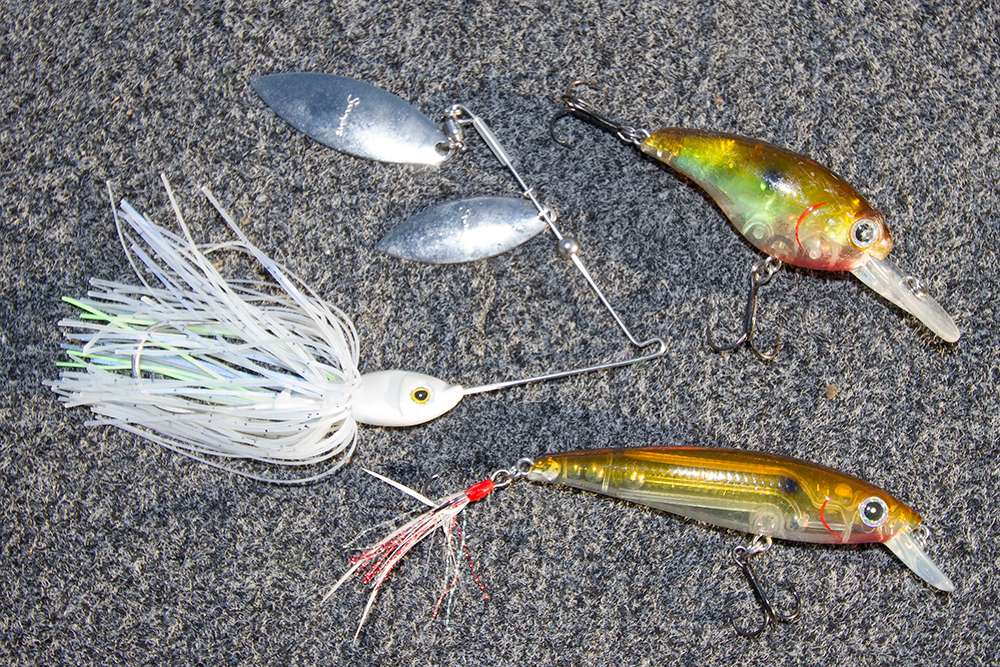
Photo by bassmaster.com
いかがでしょう、冬の雨の話。
雨と言っても、すべての雨のことを指しているわけではありませんでした。寒冷前線が通る前の温かい側に降る雨、また温暖前線に伴って降った雨と、前線が絡んだ雨にチャンスがあるようですね。
この記事はわりと暖かい地方のリザーバーに限って書かれた感じでしたが、同じような状況になるような場所であればどのフィールドにも当てはめて考えてもいいと思います。
冬でも釣りをされる方は、雨が降った直前と直後に水温計を持っていって、そのフィールド内のいろんな場所の水温を測ってみて、どこがどういう水温の変化を起こしたかを調べてみるといいかもしれませんね。
先に書いた「静かな雪の降る日は釣れる」と言うのも、もしかしたらそのあとに雪がとけてできた超冷たい水がそこに流れ込んでくるのを魚たちがあらかじめ分かっていて、そのためにいまのうちに食べておこうという気持ちになっていたために、釣れやすかったのかもしれません。まあそれは、本当かどうかまったくわからないのですけども。
また、タク石黒プロが降った雨のことを全く意に介さずに釣り上げたという場面、私としては「雨の影響がなかった」と考えたわけですけど、おそらくタクさんの頭の中には私が考えたような「冷たい雨でバスの活性が下がったらどうしよう」的なネガティブ思考がなかったのかもしれません。
もっと言うと、ネガティブなことを考えなかったのではなく、気にしなかったといいますか、もっと強いメンタルで臨んだという感じでしょうか。
そんな感じがタクさんから感じ取れました。
そういうメンタルの部分も大きいのかなと思います。
フィールドに起きる状況把握も大事なのですが、ちょっとしたことで動じないメンタルも、私には必要なんだと思います。
そんなわけでこの冬、天気予報はちゃんと天気図を見て、前線が通るかどうかに注目してみたいと思います。
それでは、また。
毎度ありがとうございます!







